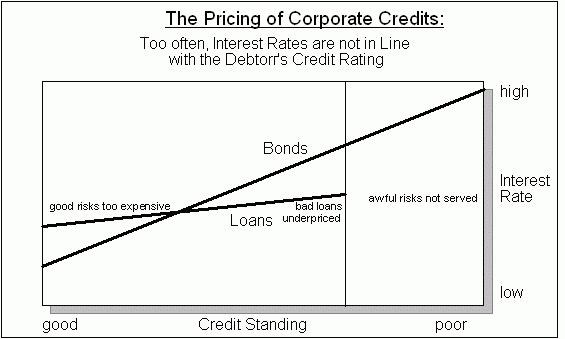Financing instruments. Pricing
Category: Corporate Banking
The price charged for a credit must cover the banks administrative and refinancing expenses. Most important, the margin must reflect the risk that is associated with each particular credit. The various factors influencing the pricing decisions are as follows:
1. The nature of the transaction
The nature of the requested credit transaction is the most critical aspect of the pricing. Obviously, premiums will be charged for complex transactions that require a lot of analytical skills and expert knowledge. The size of the loan will affect the price as well:-small amounts often require almost the same time for analysis and administration as large facilities, which should be relatively cheaper. The terms and conditions of the facility can influence pricing — as long-term loans will normally have a fixed interest rate with a moderate margin, short-term loans tend to have variable interest rates with higher margins.
2. The credit risk
The price for a credit facility must have a component reflecting the risk of default. This premium, which is charged to all credits in proportion to the risk they pose, should be large enough to finally make up for loan losses in the credit portfolio. The capital markets can be a good indicator showing if the risk premium is appropriate. Bonds issued by companies with an excellent credit rating have considerably lower interest margins than those of companies with a poor credit standing. The bond markets correctly reflect the risks associated with the respective companies. Interest rates for loans, however, used to overcharge good credits, whilst bad risks were underpriced.
Banks have started to read just their pricing according to the different risk levels. Each credit facility is rated within a coherent rating system. Such a rating mirrors the risk connected with the company, ranging from «A», for an excellent credit rating, to «E», for a poor standing. As poorly rated companies have a larger probability of going bankrupt, they must be charged a considerably higher premium. Below you find an example of how a German regional bank has implemented this into its pricing process. The premiums shown are the minimum margins which a have to be added to the interest rate after the refinancing and administrative expenses are covered:
| Premium necessary to cover credit risk | |||||
|
Market Segment |
Credit Rating
A (good) |
B |
C |
D |
Credit Rating
E (bad) |
| A | 0,21 | 0,42 | 1,25 | 2,34 | 6,24 |
| B | 0,05 | 0,15 | 0,3 | 0,75 | 5,0 |
| C | 0,1 | 0,3 | 0,5 | 2,0 | — |
3. Market conditions and competitive behavior
As price is a function of supply and demand, market forces are another determinant of price. Banking is a highly competitive business, leaving little room to charge higher margins than the competing banks would do. Price information is not freely available to everybody, but as bank rates are closely connected to money market interest rates, which are published daily in the financial pages of each newspaper, clients are at least aware if prices are going up or down. Companies with a good credit rating tend to do some cherry-picking, asking a number of banks for their rates and picking the best one.
4. Relationship with counterparty
A bank may consider if it wants to win new business from a particular corporation and then charge a preferential price. A loan may be priced more attractively if the bank has had a long and profitable relationship with a well trusted, loyal corporate client — provided the client has at least a good credit standing. As has been mentioned above, extending existing business comes much cheaper than winning new ones.
5. Bank Strategy
The banks business strategy may want to penetrate a particular market or build up some niche activities in specific areas. It may offer attractive prices to win such business.

